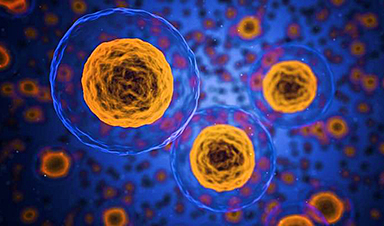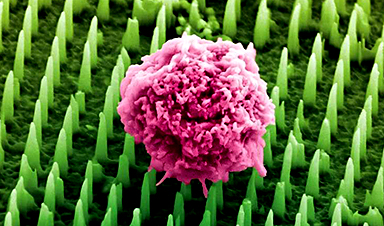Understanding the ancestry of virus families may assist researchers in pinpointing which variants possess the potential to become Disease X, the elusive pathogen responsible for the next worldwide pandemic.
A study has identified 70 virus lineages – groups of related viruses – that pose the biggest risk. Viruses from other genetic backgrounds are unlikely to cause a high number of infections in humans, the research shows.
The findings will support ongoing efforts to monitor and prepare for future pandemics, including guiding vaccine and diagnostic development, experts say.
Understanding Disease X and RNA Viruses
Disease X is the generic term used by the World Health Organization to represent a hypothetical, unidentified pathogen that could pose a significant threat to people.
RNA viruses carry their genetic information as RNA, a structure similar to DNA. They cause many diseases, including the common cold, Covid-19 and measles, and have been responsible for most epidemics, or global pandemics, in recent history.
Monitoring RNA viruses in animal populations could help to identify those that are most likely to emerge and spread rapidly in humans. However, the huge number in circulation makes this extremely challenging and expensive.
Research Findings and Epidemic Potential
The University of Edinburgh-led research team traced the lineage, or family tree, of 743 distinct RNA virus species to track how they evolved, including all species currently known to infect humans.
Researchers compared the development of strictly zoonotic viruses – those that spread from animals to humans, but not between people – with human-transmissible viruses, which can spread within human populations.
The findings showed that viruses that can spread within human populations typically evolve separately from strictly zoonotic viruses.
Human-transmissible viruses often emerge when related viruses from the same lineage can already spread between humans.
Strictly zoonotic viruses have historically not led to epidemics in human populations. Having a close relative that can infect humans, but not spread between them, does not appear to increase the risk of epidemic potential.
Implications for Pandemic Preparedness
The research team cautioned that there is still a chance the next pandemic could come as the result of a strictly zoonotic virus – such as bird flu – or an entirely new virus. However, the findings offer a route to help streamline surveillance for Disease X among the vast number of RNA viruses in existence.
Professor Mark Woolhouse, Professor of Infectious Disease Epidemiology at the University of Edinburgh, said: “Viruses without the right ancestry don’t seem to cause epidemics. Out of potentially huge numbers of mammal and bird viruses in circulation, we should concentrate on the ones that are related to existing human viruses with epidemic potential. This research narrows the search for the next Disease X enormously.”
Reference: “Temporal Dynamics, Discovery, and Emergence of Human-Transmissible RNA Viruses” by Lu Lu, Feifei Zhang, Liam Brierley, Gail Robertson, Margo Chase-Topping, Samantha Lycett and Mark Woolhouse, 18 January 2024, Molecular Biology and Evolution.
DOI: 10.1093/molbev/msad272
The research team included scientists from the Universities of Edinburgh and Liverpool and Peking University in China. The study was funded by the EU Horizon 2020 programme and the BBSRC.
News
Drug-Coated Neural Implants Reduce Immune Rejection
Summary: A new study shows that coating neural prosthetic implants with the anti-inflammatory drug dexamethasone helps reduce the body’s immune response and scar tissue formation. This strategy enhances the long-term performance and stability of electrodes [...]
Scientists discover cancer-fighting bacteria that ‘soak up’ forever chemicals in the body
A family of healthy bacteria may help 'soak up' toxic forever chemicals in the body, warding off their cancerous effects. Forever chemicals, also known as PFAS (per- and polyfluoroalkyl substances), are toxic chemicals that [...]
Johns Hopkins Researchers Uncover a New Way To Kill Cancer Cells
A new study reveals that blocking ribosomal RNA production rewires cancer cell behavior and could help treat genetically unstable tumors. Researchers at the Johns Hopkins Kimmel Cancer Center and the Department of Radiation Oncology and Molecular [...]
AI matches doctors in mapping lung tumors for radiation therapy
In radiation therapy, precision can save lives. Oncologists must carefully map the size and location of a tumor before delivering high-dose radiation to destroy cancer cells while sparing healthy tissue. But this process, called [...]
Scientists Finally “See” Key Protein That Controls Inflammation
Researchers used advanced microscopy to uncover important protein structures. For the first time, two important protein structures in the human body are being visualized, thanks in part to cutting-edge technology at the University of [...]
AI tool detects 9 types of dementia from a single brain scan
Mayo Clinic researchers have developed a new artificial intelligence (AI) tool that helps clinicians identify brain activity patterns linked to nine types of dementia, including Alzheimer's disease, using a single, widely available scan—a transformative [...]
Is plastic packaging putting more than just food on your plate?
New research reveals that common food packaging and utensils can shed microscopic plastics into our food, prompting urgent calls for stricter testing and updated regulations to protect public health. Beyond microplastics: The analysis intentionally [...]
Aging Spreads Through the Bloodstream
Summary: New research reveals that aging isn’t just a local cellular process—it can spread throughout the body via the bloodstream. A redox-sensitive protein called ReHMGB1, secreted by senescent cells, was found to trigger aging features [...]
AI and nanomedicine find rare biomarkers for prostrate cancer and atherosclerosis
Imagine a stadium packed with 75,000 fans, all wearing green and white jerseys—except one person in a solid green shirt. Finding that person would be tough. That's how hard it is for scientists to [...]
Are Pesticides Breeding the Next Pandemic? Experts Warn of Fungal Superbugs
Fungicides used in agriculture have been linked to an increase in resistance to antifungal drugs in both humans and animals. Fungal infections are on the rise, and two UC Davis infectious disease experts, Dr. George Thompson [...]
Scientists Crack the 500-Million-Year-Old Code That Controls Your Immune System
A collaborative team from Penn Medicine and Penn Engineering has uncovered the mathematical principles behind a 500-million-year-old protein network that determines whether foreign materials are recognized as friend or foe. How does your body [...]
Team discovers how tiny parts of cells stay organized, new insights for blocking cancer growth
A team of international researchers led by scientists at City of Hope provides the most thorough account yet of an elusive target for cancer treatment. Published in Science Advances, the study suggests a complex signaling [...]
Nanomaterials in Ophthalmology: A Review
Eye diseases are becoming more common. In 2020, over 250 million people had mild vision problems, and 295 million experienced moderate to severe ocular conditions. In response, researchers are turning to nanotechnology and nanomaterials—tools that are transforming [...]
Natural Plant Extract Removes up to 90% of Microplastics From Water
Researchers found that natural polymers derived from okra and fenugreek are highly effective at removing microplastics from water. The same sticky substances that make okra slimy and give fenugreek its gel-like texture could help [...]
Instant coffee may damage your eyes, genetic study finds
A new genetic study shows that just one extra cup of instant coffee a day could significantly increase your risk of developing dry AMD, shedding fresh light on how our daily beverage choices may [...]
Nanoneedle patch offers painless alternative to traditional cancer biopsies
A patch containing tens of millions of microscopic nanoneedles could soon replace traditional biopsies, scientists have found. The patch offers a painless and less invasive alternative for millions of patients worldwide who undergo biopsies [...]





















